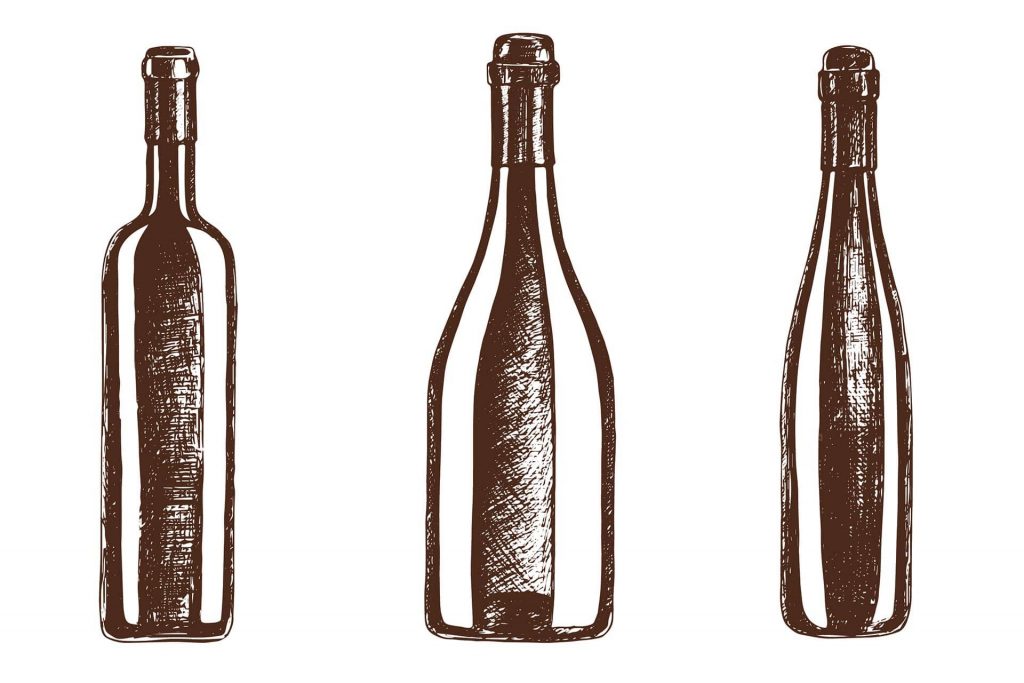We spend a lot of time talking about the content rather than the container. But can the bottle itself, by its shape or color, tell you more about what you are drinking? Even if it’s not the first thing you look at when choosing a wine, the bottle has a lot to say. Here is an introduction to the form and function of this venerable container.
The different shapes of bottles
Most of the wines will come in one of three bottle shapes: Bordeaux, Burgundy, or flute. Is this just for show? Wines historically attached to a certain bottle shape are still mostly bottled in it. Bordeaux wines will find their place in a Bordeaux shaped bottle. Burgundies in a Burgundy shape. German whites in the flute shape (sometimes called Mosel, Alsace, or Hock bottle).
This means that you will often find the grape varieties attached to those regions, in bottles from those regions. Merlot from Chile or Napa Valley will be bottled in a Bordeaux shape. Pinot Noir from Oregon will be bottled in a Burgundy style with a round bottom. Finally, Riesling will prefer flutes. Matching the varietal to the bottle makes sense for producers who are looking to communicate as much as possible at first glance. That said, with as many types of wines as bottle shapes, the choice can often be biased, for example by the limitations of the bottling facility.

For the winemaker, with a real vision and the right budget, a personalized bottle can be welcome. While it may not have a direct effect on the wine, customization is a great way to stand out in a crowded market. Many winemakers differentiate their range by housing the best wines in a special bottle. The possibility to customize can be a sign of a high level offer.
Why are wine bottles green?
What about color? Green bottles help protect wine from ultraviolet (UV) rays, although brown glass (standard for beer bottles) filters these harmful rays better. So why green more often than brown? According to Stephane Stanton-Brand, eastern market manager for Saverglass, a large bottle manufacturer based in France, “red wine doesn’t require any more UV protection than the color green offers. “
Of course, there are exceptions. Brown glass flute-shaped bottles are commonly associated with white wines from the Rheingau region of Germany. And you’re unlikely to see rosés in anything other than a colorless bottle. This benefits the wine by displaying its natural color. It is also a visual signal to consumers that the wine is meant to be drunk young (and therefore aerated!)
That said, clear glass has flaws that tinted glass can hide.
Why are wine bottles heavier?
In fact, thicker glass makes the bottle stronger, which can be essential. For example, it is necessary for sparkling wine to be contained in a denser glass to withstand the internal pressure of the bottle. Thicker glass is also crucial in large bottles, to withstand the extra weight coming from a larger volume of wine. But for most wines, the goal is usually to add just a touch of luxury.

Why is there a hollow at the bottom of the bottle?
Equally important, poor production and inaccurate cooling during the glassmaking process can make bottles more brittle or show visible imperfections, indicative of a cheaply made bottle.
The bottle is part of the wine universe. It says something about what it contains, but also about the winemaker, and even about the positioning of the château.
To know more about it, you can read the article of Winemag.
Subscribe to the Aveine Newsletter and follow us on social media.









